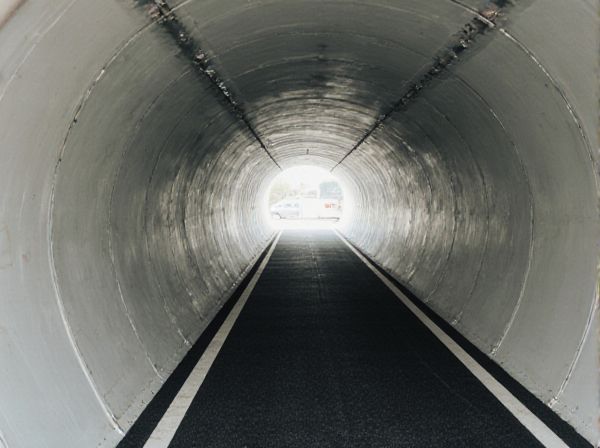
Photo illustration: Molded Transmission Tunnel vs Flat Tunnel
A molded transmission tunnel offers enhanced structural integrity and noise reduction compared to a flat tunnel, improving overall vehicle comfort. Your choice depends on factors like vehicle design, space requirements, and manufacturing costs. Molded tunnels are typically more durable and provide better insulation against vibrations.
Table of Comparison
| Feature | Molded Transmission Tunnel Carpet | Flat Tunnel Carpet |
|---|---|---|
| Fit | Custom-molded for precise contour around transmission tunnel | Uniform flat design, less tailored fit around tunnel |
| Installation | Requires accurate alignment; professional recommended | Easy to install; more forgiving positioning |
| Appearance | Seamless, high-end look with exact tunnel coverage | Simpler appearance, may show gaps near tunnel |
| Durability | Enhanced durability at curves and edges due to molding | Standard durability; prone to wear near tunnel edges |
| Comfort | Better insulation and padding over transmission tunnel | Less padding, may feel thinner over tunnel |
| Price | Higher cost due to custom molding process | Lower cost, mass-produced design |
| Best Use | Luxury and performance vehicles demanding exact fit | Economy or older cars with less focus on aesthetics |
Introduction to Transmission Tunnels
Transmission tunnels serve as critical structural elements in vehicle chassis, designed to house and protect the drivetrain components that transmit power from the engine to the wheels. Molded transmission tunnels are contoured to fit specific transmission shapes, offering enhanced rigidity and optimized space utilization, while flat tunnels provide a simplified, uniform surface that may prioritize manufacturing ease and interior floor space flexibility. The choice between molded and flat tunnels impacts vehicle performance, noise insulation, and interior design, influencing overall driving dynamics and passenger comfort.
What is a Molded Transmission Tunnel?
A molded transmission tunnel is a contoured structural component in a vehicle's chassis designed to encase and protect the transmission system while optimizing interior space and aerodynamics. Unlike a flat tunnel, which is a simple raised section without shaping, the molded transmission tunnel is precisely engineered to conform to the transmission's shape, enhancing rigidity and reducing cabin intrusion. This design improves vehicle safety, weight distribution, and overall driving dynamics by integrating seamlessly with the floorpan architecture.
Defining a Flat Transmission Tunnel
A flat transmission tunnel is characterized by a streamlined, low-profile design engineered to maximize interior space and comfort in vehicle cabins. Unlike a molded transmission tunnel, which protrudes prominently due to housing mechanical components such as the driveshaft and exhaust system, the flat tunnel allows for improved foot space and easier movement within the cabin. This design is especially beneficial in electric vehicles or models with alternative powertrains where traditional drivetrain components are minimized or relocated.
Design Differences: Molded vs Flat Tunnel
Molded transmission tunnels feature a contoured, three-dimensional shape designed to closely fit the vehicle's drivetrain components, optimizing space and structural integrity. Flat tunnels, by contrast, are characterized by a uniform, planar surface that simplifies manufacturing and allows for easier floor mat installation but may compromise optimal space usage and rigidity. The molded design enhances aerodynamic efficiency and reduces noise, while flat tunnels prioritize cost-effectiveness and ease of customization.
Structural Impact on Vehicle Chassis
Molded transmission tunnels enhance structural rigidity by providing a contoured support that distributes stress evenly across the vehicle chassis, reducing flex and improving overall torsional stiffness. Flat tunnels, while simpler in design, often result in localized stress concentrations that can lead to chassis deformation under dynamic loads. Integrating molded tunnels into chassis design optimizes load-bearing capacity and contributes to improved vehicle handling and durability.
Cabin Space and Comfort Comparison
Molded transmission tunnels typically reduce cabin space by encroaching into the footwell area, resulting in less legroom and compromised comfort for middle-seat passengers. In contrast, flat tunnels offer a spacious floor design that enhances cabin width and allows for improved seating ergonomics, making long rides more comfortable. Vehicles with flat tunnels generally provide better overall cabin comfort by maximizing usable interior space and promoting ease of movement within the cabin.
Performance and Handling Considerations
Molded transmission tunnels enhance chassis rigidity by providing additional structural support, improving overall vehicle stability and handling precision during high-performance driving. In contrast, flat tunnels prioritize interior space and comfort but may compromise torsional stiffness, potentially affecting cornering responsiveness. Choosing between molded and flat tunnels impacts weight distribution and vibration damping, directly influencing dynamic performance characteristics.
Manufacturing and Cost Implications
Molded transmission tunnels require advanced manufacturing techniques such as injection molding or thermoforming, resulting in higher upfront tooling costs and longer production lead times compared to flat tunnels made through simpler stamping or bending processes. The complexity of molded designs allows for integrated structural features and weight reduction, potentially lowering material usage and improving performance, though this can increase labor intensity and quality control demands. Flat tunnels offer cost-effective production with simpler assembly and repair, making them favorable for budget-conscious applications, but may sacrifice aerodynamic efficiency and rigidity found in molded counterparts.
Application in Modern Vehicles
Molded transmission tunnels provide enhanced structural rigidity and optimized space utilization in modern vehicles, especially in SUVs and performance cars where chassis stiffness is critical for handling and safety. Flat tunnels allow for a lower cabin floor, increasing interior space and passenger comfort, commonly applied in electric vehicles and sedans prioritizing ergonomic design and accessibility. The choice between molded and flat tunnels impacts drivetrain packaging, vehicle weight distribution, and noise vibration harshness (NVH) control, crucial for modern automotive engineering.
Choosing Between Molded and Flat Tunnel: Key Factors
Choosing between molded and flat transmission tunnels depends heavily on vehicle design and intended use, with molded tunnels offering superior structural rigidity and enhanced sound insulation. Flat tunnels provide more interior space and easier customization options, making them ideal for compact cars or vehicles requiring additional cabin room. Consider factors such as impact on chassis strength, weight, and installation complexity to determine the optimal tunnel type for performance and comfort.
 caratoz.com
caratoz.com